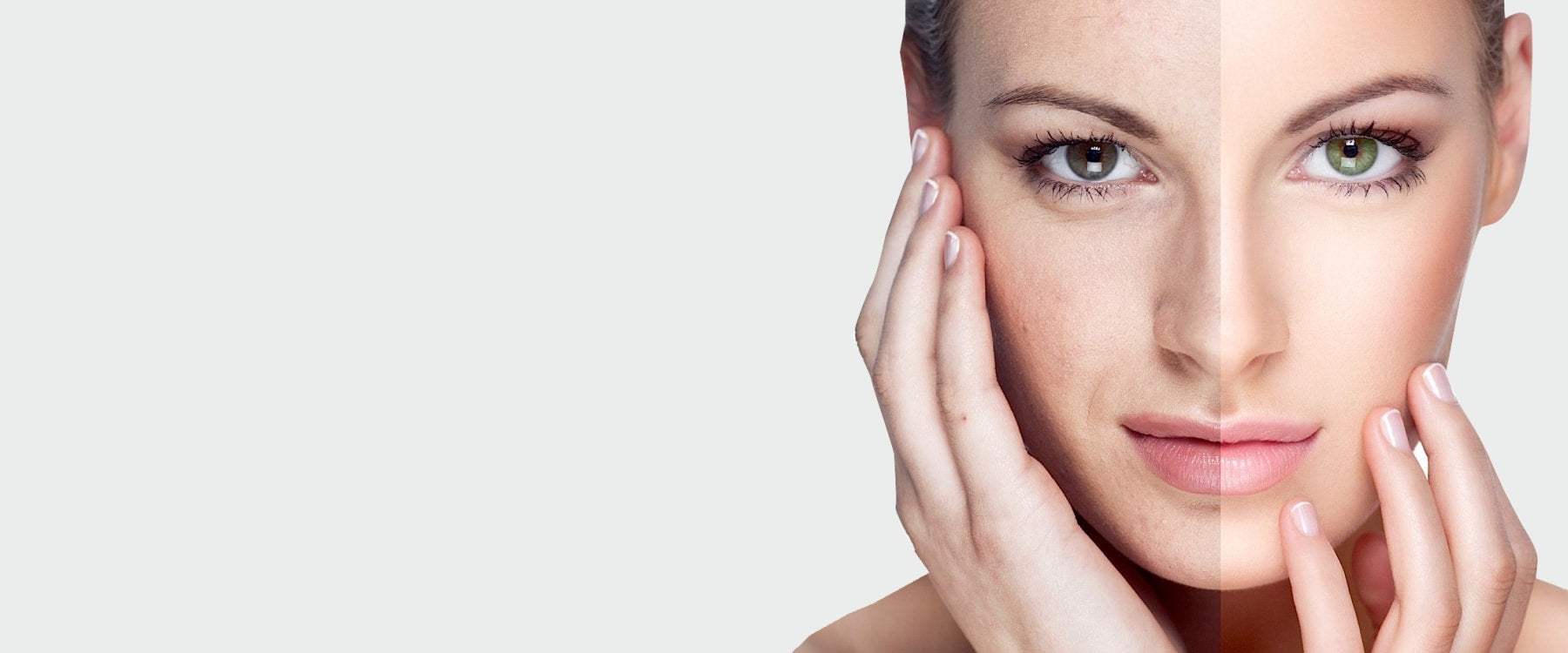Microcurrent therapy has been used for the treatment of muscular injuries, scar tissue healing, and incision wound repair. Over the years, the healing principle of microcurrent therapy has been applied to facial rejuvenation.
Scientists have studied the impact of microcurrent and its safety to be sure about the benefits. The microcurrent used in such therapies is different from the current wave used in appliances. So, it's safe and not scary at all.
A very small voltage current is passed through the tissue or muscle to generate cell activity for desired results. The voltage of the current may vary depending on the purpose of the therapy. Keep reading to know more about microcurrent waveform and its safe, efficient use.
What is a Microcurrent Waveform?
As mentioned earlier, microcurrent is a form of low-voltage current designed to reach cells under the skin. This stimulates the body's natural healing process. Human cells work using bioelectricity to send signals and transfer nutrients.
And microcurrent works within the same bioelectric range, triggering a healing mechanism. Whenever a cell is injured, the normal bioelectric mechanism of the cell is disturbed. In simple words, microcurrent enables the damaged cells to respond quickly and heal.
The same principle may be applicable to skin rejuvenation when the skin loses its healing ability due to aging. Let's discuss how microcurrent waveforms are characterized.
Characteristics of microcurrent waveform
The waveform of microcurrent can be determined via different characteristics. It imparts the rejuvenating ability to specific microcurrent devices. You may choose a device based on waveform to get the best results. Here are some characteristics of microcurrent waveforms.
Shape of waveform
The shape of the microcurrent waveform affects the blood circulation differently. The waveform shape dictates the skin layer that will be targeted in the microcurrent therapy session. Some waveforms may have a more lifting effect than others. Some microcurrent tools may incorporate several waveforms or work on a single one for consistent results.
Types of microcurrent waveform based on shape
- The sine waveform has an angulation pattern for the facelifting effect. It may be used for temporary rejuvenation.
- The square waveform is ideal for face lifting and firming saggy skin. It works in a square wave pattern.
- The ramp waveform gives a plumping effect and works in a diagonal pattern.
- The rectangular waveform has a long-term facelifting impact and works in a box-top rectangular wave.
- Sawtooth waveform may make the skin more plump and reduce the appearance of mild wrinkles and fine lines.
Microcurrent intensity
The intensity emitted from microcurrent devices is the amount of current being delivered to the skin. This intensity also controls the rate of current flow to the skin per second. The measure of microcurrent is millionths of an ampere. A low intensity will be undetectable and cause no pain.
Many devices may come with adjustable intensity. Moreover, the facial rejuvenation devices come with low intensity to ensure a pain-free facial. For instance, a facial rejuvenation device may deliver a current of 15-20 microamperes.
Frequency of microcurrent
Frequency is the pulse width of the microcurrent. It enables the tissue to work on phosphate channels and trigger tissue healing. It is measured in Hertz. The amount of frequency used in microcurrent devices may vary depending on the type of treatment.
Different microcurrents of a device may be set at varying frequencies, such as 10 Hz and 30 Hz. Moreover, a higher frequency may be used for pain relief using a TENS machine. Pain relief patches/dressings may also be made on the same principle.
How to Benefit from Microcurrent Therapy?
There are several benefits of microcurrent therapy for skin rejuvenation and diminishing fine lines and wrinkles. With consistent use, your face will appear youthful-looking and radiant. As collagen reduces with age, the skin develops wrinkles with a lack of ability to regenerate itself.

This is when you may benefit from the rejuvenating properties of microcurrent. After all, microcurrent has the ability to regenerate collagen and plump the skin from within. These claims are not anecdotal and are science-backed to ensure a safe and effective use.
The scientific proof
In a recent study, thirty women up to the age of 45 participated to learn about the effect of microcurrent on existing wrinkles. All the participants had visible wrinkles on the forehead, mouth, and nose.
Before starting the clinical trial, photos of participant's faces were taken to compare after the treatment. They all were given microcurrent therapy for twenty minutes for thirty consecutive sessions.
Again, photo observations were collected post-treatment, and three blinded independent reviewers were asked to rate the wrinkles. There was an improvement of 21.18% in the forehead wrinkles. The nose and mouth region had an improvement of 5.85%.

Self-assessment was also done after a month of stopping the treatment. Over 70% of participants were satisfied with the results. 89% reported their skin felt softer after the treatment.
In another study, microcurrent was observed to increase mitochondrial activity and adenosine triphosphate (ATP) synthesis, which are essential for cellular rejuvenation. This takes place in both visceral and subcutaneous adipose tissue, thus leading to cell repair.
The effect of microcurrent dressing was also studied to learn about its efficacy on wound healing. In this study, 10 participants were selected to be treated using wireless active microcurrent. Wireless microcurrent stimulation(WMCS) was used to improve the blood flow in the wound area.
The participants with perfused partial thickness burn wounds were treated with WMCS. A Laser Doppler (LDI) was used to measure the skin characteristics both before and after the study. The results concluded a single application of WMCS increased mean flow, velocity, and hemoglobin and oxygen saturation in burn wounds.
When healthy skin was tested after the treatment, it also had an increase in these parameters, although it was less significant. However small, the current could trigger healing in the burn tissue.
This potential for faster healing can be achieved via WMCS in a non-invasive manner. None of the participants claimed to feel pain or discomfort during the experiments, proving microcurrent is safe as well as effective.
Is Microcurrent Safe for Facial Rejuvenation?
Microcurrent is a non-invasive and very low-risk facial treatment. Since the current use is undetectable and very small, it causes no pain. The therapy is safe for most users to treat and prevent various aging signs. However, those who have sensitive skin must go slow and consider doing patch tests to know about the effects.
Who should avoid microcurrent facials?
People who have severe acne or open wounds on the face must avoid microcurrent therapy. Since the device is not tested on expecting mothers, they should also avoid it during pregnancy.
People who have botox and fillers in the face should also avoid microcurrent as the fillers may move, and botox freezes the muscles. Lastly, anyone who has a pacemaker should not go for microcurrent therapy.
As discussed before, microcurrent is safe, but some people may notice the following mild reactions:
- Skin tingling
- Mild redness
- Facial twitching
- Skin sensitivity
At-Home Microcurrent Therapy
Choosing an effective and sturdy microcurrent device is crucial to get the best results. We suggest using a professional-grade EvenSkyn Phoenix Face Lifting Microcurrent Bar for massaging your face and neck with microcurrent. The device is made from sturdy alloy and has four deep kneading massaging rollers placed at an ideal 115° angle.

It is designed to work with artificial or solar light, so you do not need to charge or plug it. A full charge releases a 15uA current, which is effective on wrinkles, supporting collagen and elastin production in the skin.
You can stay assured the device is safe for use as it's FDA Registered and has Health Canada, ISO 13485 and ISO 900 certifications. To use the wand, clean your skin and apply a conduction gel for easy gliding. Use the device in a well-lit room.
Treat each area for fifteen minutes, including forehead, eyebrows, jawline, cheeks and neck. With regular use, you may notice firm and toned skin. Moreover, the deep massage will improve product absorption and hydrate the skin better.
Wrapping Up
Microcurrent therapy is ideal for those wishing for a facelift without going under the knife. With its different characteristics, microcurrent may help in plumping and lifting the skin. This may help in diminishing fine lines, wrinkles, and saggy skin.
With consistent use, microcurrent therapy effects are long-lasting for youthful-looking skin. Pair microcurrent therapy sessions with other effective skin care products for the best results.
References:
- Stefan Kolimechkov, Marcos Seijo, Ian Swaine, Jack Thirkell, Juan C. Colado & Fernando Naclerio. "Physiological effects of microcurrent and its application for maximizing acute responses and chronic adaptations to exercise." November 2022
- Fatemeh Saniee, Hamid Reza. "Consider of Micro-Current's effect to variation of Facial Wrinkle trend, Randomized Clinical Trial Study." July 2012
- Kolimechkov S, Seijo M, Swaine I, Thirkell J, Colado JC, Naclerio F. "Physiological effects of microcurrent and its application for maximizing acute responses and chronic adaptations to exercise." 2023 Mar
- S. Tsolakidis a c, R. Rosenauer. "Wireless microcurrent stimulation improves blood flow in burn wounds." August 2022
- Alan B. Goldsobel, Niveditha Prabhakar & Blake T. Gurfein. "Prospective trial examining safety and efficacy of microcurrent stimulation for the treatment of sinus pain and congestion." January 2020
- Stone AV, Ma J, Whitlock PW, Koman LA, Smith TL, Smith BP, Callahan MF. "Effects of Botox and Neuronox on muscle force generation in mice." 2007 Dec










Leave a comment
All comments are moderated before being published.
This site is protected by hCaptcha and the hCaptcha Privacy Policy and Terms of Service apply.